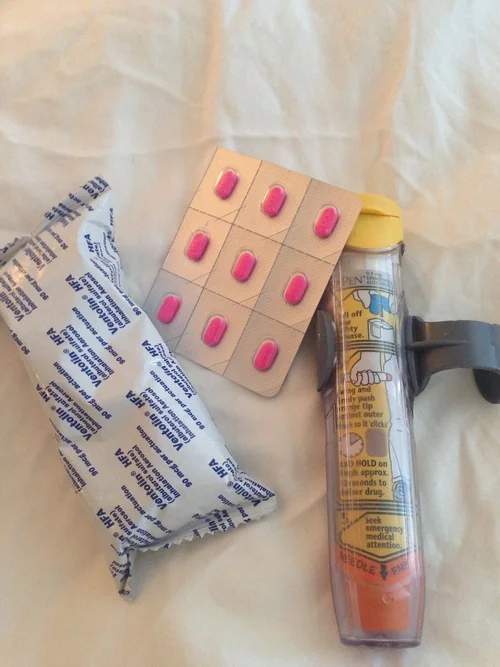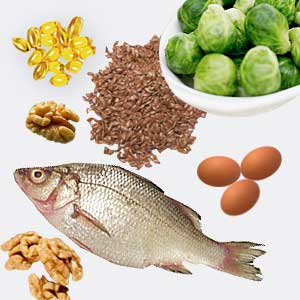This post is dedicated to the parents of kids with life threatening allergies. I've managed my fish and nut allergies pretty successfully all my life, and was raised to read labels and question ingredients. But accidents happen. In this post, I've laid out some strategies that have worked for me personally, and explanations about what it feels like with the hope that it provides a bit of clarity to parents whose allergic kids may not be able to fully communicate during an allergy attack.
When I created the LaLa Lunchbox app, I made it completely customizable so that people with allergies or eating preferences of any kind can be accommodated. Allergies are serious. We get that. We have also launched various dietary-specific food bundles inside of our app to provide more safe lunch inspiration for LaLa Lunchbox users.
The nuances of allergies can be complicated to explain to outsiders. For example, the reaction my body has to a walnut is far more severe than the reaction to a Brazil nut and yet they both cause anaphylaxis. Same with various fish. Over the years, I've unfortunately had the opportunity to gather this detailed data and have listed my top tips below for eating out of my home. During holiday season, navigating the allergy waters can be particularly challenging. Sometimes, even after four decades, I make mistakes and eat something that causes a bad allergic reaction. I have to live with the burden of guilt and regret when this happens and at the same time, I'm incredibly grateful just to live.
My strategies for eating out
1. Avoid. There are many foods that I avoid completely and only eat if I've made myself because I've been burned in the past. This includes foods like pesto (walnuts), banana bread (walnuts), barbecue sauce (anchovy) and marshmallows (fish gelatin). If I'm at all doubtful that a food is safe, I don't eat it. There are plenty of other options in the world.
2. Clean Hands and Utensils for All. When I'm at the grocery store, the bakery or anywhere else that I may be purchasing food where there are known allergens and potential cross contamination, I ask whomever is helping me to put on a fresh pair of gloves. I request newly washed ice cream scoopers, newly washed tongs, you name it. These days, many people are accommodating to the request. If it's an issue, however, you should question whether you want to spend a penny at that establishment. At restaurants, I always let my waitperson know about my allergies with a no-nonsense, frank chat. This hasn't always been successful; unfortunately there are still people who just don't understand that "no nuts" means "not one teeny tiny bit of a nut anywhere."
3. Bring Extra Tissues. For holiday parties, restaurants, pot luck dinners and the like, I use a spare tissue to open doors and turn on faucets. I have gotten hives on occasion just by touching something that has been touched by someone who has eaten nuts or fish. Better safe than sorry, and tissues really take up no room.
4. No Kisses. Hello and goodbye kisses are out of the question. For sensitive allergies like mine, it's just not worth risking the hives on my cheek from someone who has eaten something I'm allergic to. Folks who don't know me, likely won't be kissing me, and folks who do, understand that I'm not being cold, I'm being safe.
Note: these are things that have worked for me, but always listen to the advice of your allergist. This is not clinical advice by any means.
photo courtesy of WebMD
The fear of an anaphylactic reaction
The fear is one of the most difficult parts of an allergic reaction for me. Allergic reactions are painful, sure. But it's terrifying to feel something going wrong inside of your body and not be able to see any of it.
The physical reaction
Beyond the panic, the first few moments of an allergic reaction make my mouth burn. My tongue feels prickly and I get hot throbbing hives on my lips and on my face. After about five minutes, I start to feel an ache in my esophagus as the hives move down my throat. I try not to panic, but it's hard not to. My legs feel weak and I want to cry. My hands start shaking.
If I have accidentally swallowed something I'm allergic to, I get what feels like a golf ball stuck inside of my esophagus, my throat feels scratchy and it's painful to swallow. I worry about the hives. I worry about my blood pressure plummeting and going into shock. I try to contain the worry in my own head, but it's almost impossible. I'm afraid to alarm the people around me because I need them to stay calm on my behalf, just in case. My stomach aches with both a sharp and dull pain that makes me want to close my eyes and sleep so that it will stop aching. Benadryl is my first line of attack, followed immediately by two sprays of my ventolin inhaler and the epi pen. Once the Benadryl kicks in, everything seems to be moving in slow motion. After about ten minutes, the hives on my lip go down, my tongue doesn't feel as swollen, numb and prickly but my stomach still aches. I am overwhelmed with feelings of regret and guilt. I want to crawl out of my own skin from the knot in my stomach. I tell myself over and over that I can get through this and I'm grateful for supportive people around me.
The safest plan if you have an anaphylactic reaction is always to go straight to the emergency room to be checked out by a doctor, even after you've administered the epi pen.
photo courtesy of surefoodsliving.com
The After Effects
The epi pen makes my body jittery and uncomfortable. After the Benadryl and the inhaler, I feel drugged and uncomfortable in my own skin. Within two minutes of getting the epi pen injection, I feel jittery and woozy all at once, but incredibly relieved that help is on the way. Everything feels like a monumental effort and yet I feel so speedy, like there's a highway full of race cars inside of me.
It took me years to come to terms with the fact that I had to visit the ER with every anaphylactic reaction. The ER can be an overwhelming place, but it's part of the life-saving protocol for an allergic person. It goes without saying that if you ever have an anaphylactic reaction and do not have your epi pen, call 911 or go immediately to the ER.
The day after
After an anaphylactic reaction, I feel bloated and out of it the next day. I need extra sleep. I try and put it behind me and thank my lucky stars that I got through it. I've never discussed the details about having a reaction with anyone so I don't know if this is standard. I haven't met many people of my generation who have allergies like this, and when I have in the past, we've mostly compared notes on what we're allergic to and what medications we rely on. Do you have life threatening allergies? Is this generally how you feel during an attack?
For nut-allergic families, I've compiled a Guide to Safe, Nut-Free Lunches. If your family or a family that you know has a child with life threatening allergies and you think they may benefit from speaking to an adult who has been through it, please email me. I'm not a physician, but am always happy to provide emotional support.




